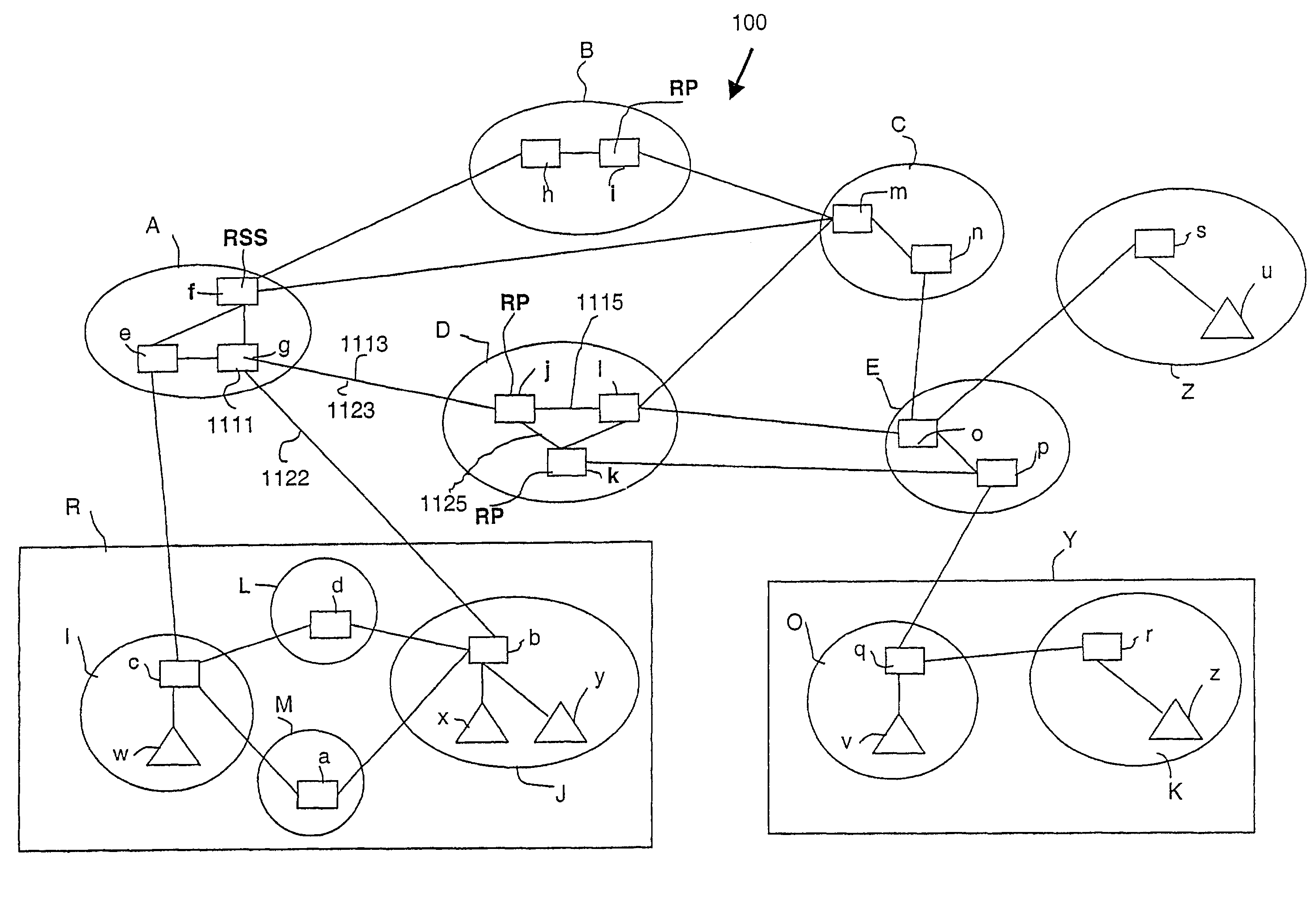Method and arrangement for handling information packets via user selectable relay nodes
a relay node and information packet technology, applied in the field of communication, can solve the problems of inability of users to influence the routing of their packets, inability of intermediary nodes to redirect packets, and difficulty in ensuring the safety of users, so as to improve throughput, minimize costs, and enhance security
- Summary
- Abstract
- Description
- Claims
- Application Information
AI Technical Summary
Benefits of technology
Problems solved by technology
Method used
Image
Examples
Embodiment Construction
[0055]An Internet communication network 100 is depicted in FIG. 1 including five transit or backbone networks A, B, C, D, and E and three stub networks R, Y, and Z. A “backbone” network is an intermediary network which conveys communicated data from one network to another network. A “stub” network is a terminal or endpoint network from which communicated data may only initially originate or ultimately be received. Each network, such as the stub network R, includes one or more interconnected sub-networks I, J, L and M. As used herein, the term “sub-network” refers to a collection of one or more nodes, e.g., (d), (a), (b, x, y), (q, v), (r, z), (s, u), (e, f, g), (h, i), (j, k, l), (m, n), and (o, p), interconnected by wires or switches for local inter-nodal communication. Nodes within a parenthesis belong to the same sub-network. Each sub-network may be a local area network or LAN. Each sub-network has one or more interconnected nodes of which nodes u, v, w, x, y, z are host computer...
PUM
 Login to View More
Login to View More Abstract
Description
Claims
Application Information
 Login to View More
Login to View More - R&D
- Intellectual Property
- Life Sciences
- Materials
- Tech Scout
- Unparalleled Data Quality
- Higher Quality Content
- 60% Fewer Hallucinations
Browse by: Latest US Patents, China's latest patents, Technical Efficacy Thesaurus, Application Domain, Technology Topic, Popular Technical Reports.
© 2025 PatSnap. All rights reserved.Legal|Privacy policy|Modern Slavery Act Transparency Statement|Sitemap|About US| Contact US: help@patsnap.com



